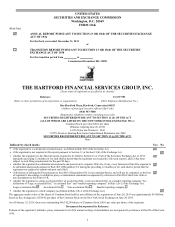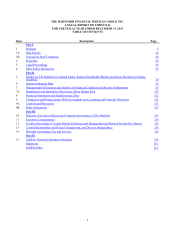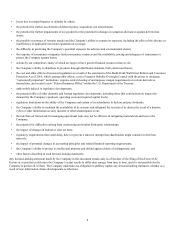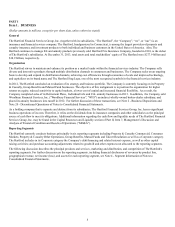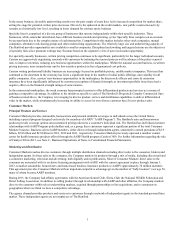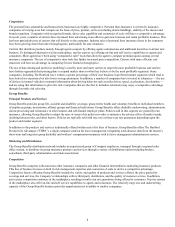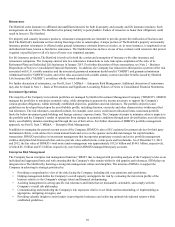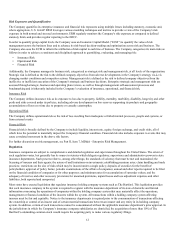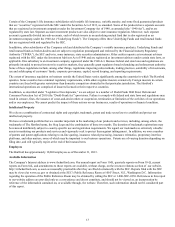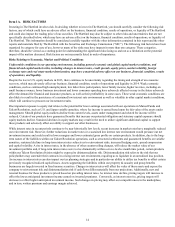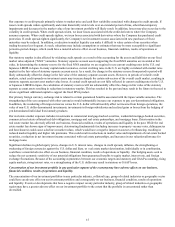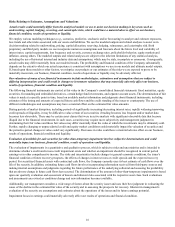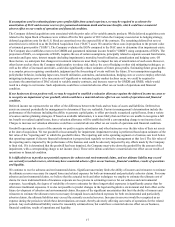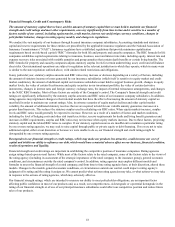The Hartford 2013 Annual Report Download - page 8
Download and view the complete annual report
Please find page 8 of the 2013 The Hartford annual report below. You can navigate through the pages in the report by either clicking on the pages listed below, or by using the keyword search tool below to find specific information within the annual report.8
Competition
The personal lines automobile and homeowners businesses are highly competitive. Personal lines insurance is written by insurance
companies of varying sizes that compete on the basis of price, product, service (including claims handling), stability of the insurer and
brand recognition. Companies with recognized brands, direct sales capability and economies of scale will have a competitive advantage.
In recent years, a number of carriers have increased their advertising in an effort to gain new business and retain profitable business. This
has been particularly true of carriers that sell directly to the consumer. Industry sales of personal lines insurance direct to the consumer
have been growing faster than sales through agents, particularly for auto insurance.
Carriers that distribute products mainly through agents compete by offering agents commissions and additional incentives to attract new
business. To distinguish themselves in the marketplace, top tier carriers are offering on-line and self service capabilities to agents and
consumers. More agents have been using “comparative rater” tools that allow the agent to compare premium quotes among several
insurance companies. The use of comparative rater tools has further increased price competition. Carriers with more efficient cost
structures will have an advantage in competing for new business through price.
The use of data mining and predictive modeling is used by more and more carriers to target the most profitable business and carriers
have further segmented their pricing plans to expand market share in what they believe to be the most profitable segments. Some
companies, including The Hartford, have written a greater percentage of their new business in preferred market segments which tend to
have better loss experience but also lower average premiums. In addition, a number of companies have invested in telematics — the use
of devices in insured vehicles to transmit information about driving behavior such as miles driven, speed, acceleration, deceleration —
and are using that information to price the risk. Companies that are the first to introduce telematics may enjoy a competitive advantage
through favorable risk selection.
Group Benefits
Principal Products and Services
Group Benefits provides group life, accident and disability coverage, group retiree health and voluntary benefits to individual members
of employer groups, associations, affinity groups and financial institutions. Group Benefits offers disability underwriting, administration,
claims processing and reinsurance to other insurers and self-funded employer plans. Policies sold in this segment are generally term
insurance, allowing Group Benefits to adjust the rates or terms of its policies in order to minimize the adverse effect of market trends,
declining interest rates, and other factors. Policies are typically sold with one, two or three-year rate guarantees depending upon the
product and market segment.
In addition to the products and services traditionally offered within each of its lines of business, Group Benefits offers The Hartford
Productivity Advantage (“THPA”), a single-company solution for leave management, integrating work absence data from the insurer’s
short-term and long-term group disability and workers’ compensation insurance with its leave management administration services.
Marketing and Distribution
The Group Benefits distribution network includes an experienced group of Company employees, managed through a regional sales
office system, to distribute its group insurance products and services through a variety of distribution outlets including brokers,
consultants, third-party administrators and trade associations.
Competition
Group Benefits competes with numerous other insurance companies and other financial intermediaries marketing insurance products.
This line of business focuses on both its risk management expertise and economies of scale to derive a competitive advantage.
Competitive factors affecting Group Benefits include the variety and quality of products and services offered, the price quoted for
coverage and services, the Company’s relationships with its third-party distributors, and the quality of customer service. In addition,
active price competition continues in the marketplace resulting in multi-year rate guarantees being offered to customers. Top tier carriers
in the marketplace also offer on-line and self service capabilities to agents and consumers. The relatively large size and underwriting
capacity of the Group Benefits business provides opportunities not available to smaller companies.

